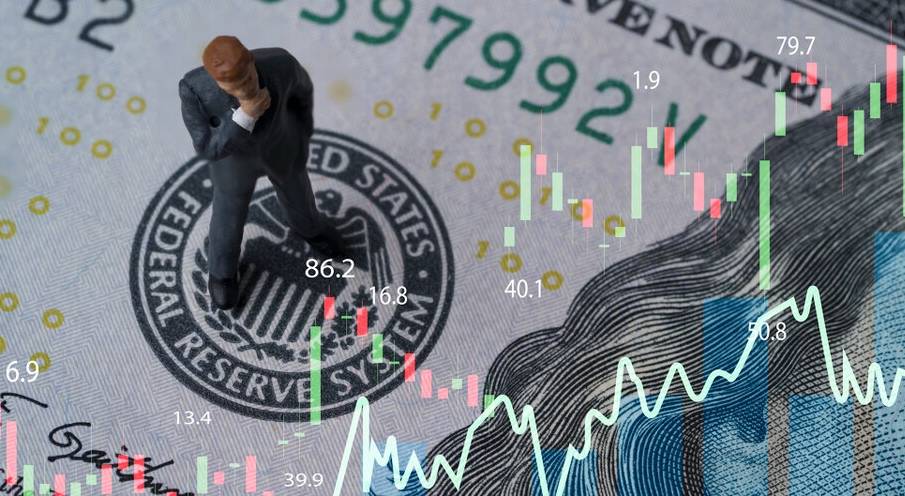NASDAQ Hits 5-Day High; Tesla Nears $30T Valuation
Advertisements
As the financial markets continue to navigate through a tumultuous landscape, recent developments have provided both challenges and opportunities for investors and economic stakeholders alikeIn a striking display of resilience, the Nasdaq Composite Index achieved remarkable heights over five consecutive trading days, prompting many to wonder about the underlying dynamics that made such an ascent possible.
One of the most audacious moves in the tech sector came from none other than Elon Musk, the CEO of TeslaMusk has made headlines with a bold prediction: he believes that Tesla's market capitalization could surpass an astounding $30 trillionThis forecast comes in the wake of Tesla's foray into humanoid robotics and advancements in autonomous driving technology, both of which Musk projects will significantly bolster the company’s valuation in the coming years.
At the same time, the Federal Reserve has been vocal in addressing the current economic climate
Key officials have been delivering statements that reflect a cautious optimism regarding the gradual alleviation of inflationary pressuresThis dialogue is crucial, particularly as consumer confidence shows signs of wavering, as evidenced by the recent release of the University of Michigan’s Consumer Sentiment Index, which fell below market expectations.
When evaluating the market's performance at the end of the week, we find that the Dow Jones Industrial Average dipped slightly, down 57.94 points, or 0.15%, closing at 38,589.16. The S&P 500 also experienced a minor decrease of 2.14 points, accounting for a mere 0.04% change, while the Nasdaq added to its consecutive record highs with a modest gain of 21.32 points, or 0.12%, bringing it to 17,688.88.
Looking at the week as a whole, a notable sentiment was felt across trading desksInvestors appeared to be digesting the implications of recent Federal Reserve announcements while assessing inflation indicators
- Nanhua Futures: Revenue vs. Net Profit Gap Explored
- Amazon re:Invent Kicks Off: Key Announcements to Watch
- The US May Suspend Rate Cuts This Month
- Oil Dollar Era Ends: Dollar Hegemony Risky?
- African Economies Impacted by Dollar Dynamics
The S&P 500 managed to salvage a cumulative increase of 1.6%, and the Nasdaq surged by 3.2%, while the Dow hovered close to a neutral positionThe information technology sector drove most of the gains, with semiconductor companies like Broadcom standing out due to favorable earnings reports that catapulted the stock up by an impressive 23.4% in just one week—a record breaking performance for the company.
Despite these highs, caution persistsAdam Crisafulli, the founder of Vital Knowledge, pointed out the global pressures influencing market sentiment, highlighting the political instability in France and the Bank of Japan's decision to taper its quantitative easing programHe emphasized that while worldwide monetary policies are loosening, the pace is insufficient to counterbalance the headwinds faced by corporate earnings amid slowing nominal growth.
Turning back to Elon Musk's predictions, which have become a focal point in discussions regarding the future of technology and investment, it's noteworthy how his vision for Tesla's humanoid robots could potentially uplift the company’s valuations dramatically
Musk believes the market for humanoid robots alone could elevate Tesla to a valuation of $25 trillion, while autonomous driving technologies could inject another $5 to $7 trillionSuch figures are staggering, especially when juxtaposed against the current total market capitalization of the S&P 500, which stands at approximately $45.5 trillion.
Cathie Wood, a well-known advocate for Musk's vision and the head of Ark Invest, has also weighed in on the discussion, suggesting that with a strong focus on the development of autonomous driving and AI technology, Tesla's stock price could reach $2,600 by 2029. Ark Invest currently holds shares worth $730 million in Tesla, testament to their belief in Musk's ambitions.
The broader economic landscape remains complex, with the Federal Reserve playing a pivotal role in shaping future policy directionsOn Friday, a series of Federal Reserve officials—including Lisa Cook and Loretta Mester—articulated their perspectives on the recent Consumer Price Index (CPI) data, signaling a constructive view toward the economic conditions presented by the latest inflation readings

Mester articulated that the recent inflation data is good news for both the economy and the central bank, expressing hope that this downward trend in inflation could persist over time.
Contrary to expectations, however, analysts like James Cann from Abernathy Investment pointed out that despite the soft CPI report, the Fed maintained a hawkish stance, implying that the threshold for loosening monetary policy is higher than previously anticipatedThe narrative emerging from these discussions suggests that sustained evidence of weak inflation would be necessary for any shifts in policy direction, leaving little room for maneuverability in the near term.
The projections from Abernathy indicate a continued slowdown in economic activity without any glaring signs of significant downturnsConsequently, expectations are set for the Federal Reserve to possibly consider rate cuts only in December, with the proximity of the upcoming U.S
Leave a Comment